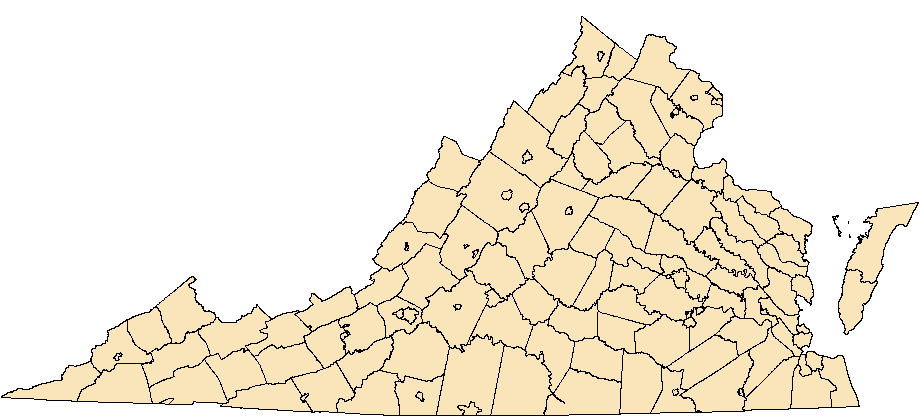Epitheca costalis (Selys, 1871)
Stripe-winged Baskettail
NatureServe Global Rank: G5
Virginia State Rank: S2S4
VA DGIF Tier: IV
Federal Legal Status: None
Virginia Legal Status: None
Description: The Stripe-winged Baskettail is a medium-sized brown dragonfly with yellow markings along the side of the abdomen. The abdomen is relatively narrow, and somewhat constricted at the base. The thorax is brown and rather hairy. The wings are clear except for small black spots at the base of the hindwing. It ranges in size from 38-48 mm (1.5 - 1.9 inches).
Similar species: The Stripe-winged Baskettail is very similar to several other species of Baskettail (Epitheca sp.) in Virginia, but can be distinguished by the relatively narrow and constricted abdomen. Terminal appendages are longer than those of related species. See illustrations in Paulson (2011) p. 398.
North American Range: The Stripe-winged Baskettail ranges in the Eastern U.S. from Iowa and New Jersey south to the gulf states and east Texas. Absent from higher elevations of the Appalachians. There are records from several eastern counties in Virginia.
VA Observations by Locality: Fairfax | Suffolk, City of | Virginia Beach, City of | Charles City | Chesterfield | Virginia Beach, City of







Flight season and broods: The flight season for the Stripe-winged Baskettail in Virginia ranges from 21 May - 2 June.
Aquatic Habitat: The Stripe-winged Baskettail prefers ponds, lakes, and slow streams. "More likely to be on streams than other small baskettails" (Paulson, 2011).
Behavior and Ecology: Most baskettails fly early in the season and are gone by early summer.
Population trend and potential threats: Mostly unknown. Though regarded as Possibly Extirpated in Pennsylvania, and Imperiled to Critically Imperiled in four other states (NatureServe, 2011), the difficulty of identifying this species in the field combined with few knowledgeable observers may obscure its true status.
Management practices: Monitor and protect occupied habitat.
References: Carle, F.L., 1982. A contribution to the knowledge of the Odonata. Ph.D. thesis, Virginia Polytechnic Institute and State University, Blacksburg, Virginia. 1,095 pp.
NatureServe. 2011. NatureServe Explorer: An online encyclopedia of life [web application]. Version 7.1. NatureServe, Arlington, Virginia. Available http://www.natureserve.org/explorer (Accessed: March 16, 2012).
Paulson, Dennis. 2011. Dragonflies and Damselflies of the East. Princeton University Press. Princeton and Oxford. 538 pp.
Roble, Steven M. 2011. Dragonflies of Virginia- Flight dates. Unpub.
Virginia Department of Conservation and Recreation, Natural Heritage Program, 600 E. Main St., 24th Floor, Richmond, VA 23219
This atlas was compiled
by the VA Natural Heritage Program with funds provided by the VA Dept. of Game and Inland Fisheries through a state wildlife grant
from U.S. Fish and Wildlife Service
Questions/Comments? Check the contacts page |
Internet Privacy Policy Statement
Last Modified: Friday, 26 February 2021, 03:21:56 PM